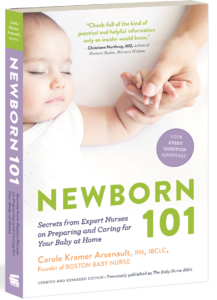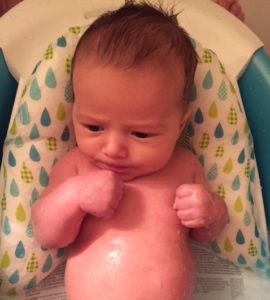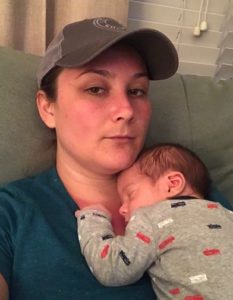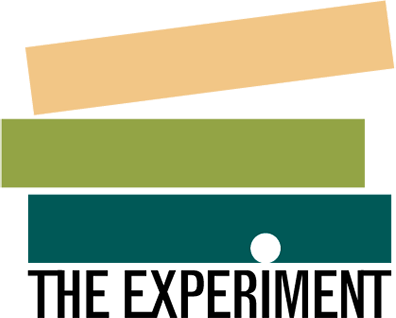My parents always tell the story of when they brought my older sister home from the hospital. Happily, my Grandma came to stay for a few nights to help out the new parents.
They were giving my sister her first bath in the kitchen sink. My mom was gently holding my sister in the water when Grandma said, “OK, now grab the washcloth and we’ll get started.” My mom promptly turned around to get the cloth and my sister slid down into the sink and under the water.
Grandma calmly plucked my sister out of the water and instructed my mom, “Rule number one: try not to drown the baby.”
We all laugh at this story now, especially because my mother herself was an experienced nurse at the time who had plenty of experience with infants. But what does the story teach us? Every new mom is dealing with new experiences and mistakes are bound to happen. Having an experienced individual on hand to provide advice is priceless.
So when my sister Ashley, now fully grown and an experienced nurse herself, asked me to come and spend a week helping her after her C-section to deliver her first child, I jumped at the chance. She would welcome the help as my brother-in-law was in grad school full time, and I felt fairly experienced as I pretty much paid my way through college by babysitting. I may not have children myself, but how hard could it be between all of us?

As I raced out of the office to head to the airport, I snagged a copy of one of our forthcoming titles . . . just in case. Newborn 101—a book with “the secrets of a baby nurse.”
Before working on this book I hadn’t even known there was such a thing as a “baby nurse”—someone couples pay to come instruct and assist during those first few days at home with a new baby. While I wasn’t aware this was a common thing, I acknowledged that not everyone had access to a grandma who could stay over to help, so it made sense.
I meant to carefully read through the book on the plane, but I was sure much of it would be common sense—for example, don’t let the baby slip under the bath water.
The plane touched down, I oohed and ahed appropriately over my new nephew Daniel, waved my brother-in-law off to class, put my sister down for a much-needed nap . . . and my adventure began.
You guessed it—in that split second between removing one diaper and placing the clean one underneath, I got peed on. That was the first time I wished I had studied for my Newborn 101 crash course. The book’s advice:
baby care tip
When changing your newborn’s diaper, he may perform a surprise urination or bowel movement while you’re trying to get the clean diaper on or grab another wipe. This is in response to his bottom getting chilled when exposed to the air. To help avoid a mess, and to make changing in general quicker and easier, try sliding an open clean diaper under your baby’s bottom and pulling a few wipes out before you take off the dirty diaper. Then, once your baby is clean, you can simply pull out the dirty diaper and quickly fasten the clean one— ideally keeping you clean and dry in the process!
When my sister woke from her nap for the next feeding, we had a good laugh at my expense. She brought out these teepee covers that are made to sit atop the penis to avoid such messes, but after a few more trial runs we both agreed that pre-placing the clean diaper and having it there as a shield while you clean up was much more efficient. Not to mention that the teepee wasn’t the best option for post-circumcision care.
 Later that same night came baby Daniel’s first bath—of course we laughingly retold my brother-in-law the story of my sister’s first bath with my mom. Armed with a baby bath seat, we weren’t worried about him slipping under the water. And this time, I did read the Newborn 101 notes first. We had tested the warm bath water, bought the all-purpose baby wash, set up all of our supplies beforehand—we were ready. But somehow I missed one key prep note: Warm up the bathroom beforehand.
Later that same night came baby Daniel’s first bath—of course we laughingly retold my brother-in-law the story of my sister’s first bath with my mom. Armed with a baby bath seat, we weren’t worried about him slipping under the water. And this time, I did read the Newborn 101 notes first. We had tested the warm bath water, bought the all-purpose baby wash, set up all of our supplies beforehand—we were ready. But somehow I missed one key prep note: Warm up the bathroom beforehand.
We expected him to cry—the book even assured us he would. But you would have thought we were torturing the poor boy. Ashley and I grew more and more distraught, trying to speed up our process, but in less than a minute, poor Daniel was shivering like he had been left out in the snow. I honestly had no idea how fast babies lose heat.
baby care tip
When giving your infant a bath, start out by warming up the bathroom. You can do this by turning up the heat ten minutes before bath time, turning on the bathroom heat fan if you have one, or bringing in a space heater and putting it in a safe place away from water and your baby. Providing a warm-air environment will likely minimize cries due to being cold before and after the bath.
For the second bath a few days later, reading the prep notes more closely, we turned on the bathroom heater and made the room nice and toasty beforehand. We also utilized clean washcloths like blankets as we went. Yes, Daniel definitely still cried—but more to let us know of his general annoyance. He still shivered a bit, but it was noticeably less and we all felt much more at ease.

Fast-forward to the third day. Those 2-3 hour periods where Daniel slept during the day were great periods to get things done. But those 2-3 hour periods where he actually slept during the night were not long enough for us to really sleep. Even though I wasn’t the one with a crying baby waking me to be fed throughout the night, the noise definitely woke me up . . . better than any alarm.
Now to be fair, with the three of us dealing that first week with Daniel, we could trade off much of the responsibility. But my brother was in graduate school full time, my sister could only do so much physically after the C-section, and while we had all had a lot of experience with little children, none of us had ever had full time responsibility for a newborn. So while we had those two first productive days getting things done while he slept, by that third day we all felt the effects of not sleeping through the night.
This time it was my brother-in-law who brought out Newborn 101 with a suggestion (apparently he had flipped through the night before when he couldn’t get back to sleep).
During the day it’s a good idea to wake your baby every two to two-and-a-half hours for a feeding if you’re breastfeeding and every three to three-and-a-half hours if you’re bottle-feeding. By waking your baby you are sending her signals that daytime is wake time and nighttime is sleep time. Most babies have one long sleep stretch of about four hours (maybe five if bottle-feeding) during this stage, but do not let your baby sleep this long during the day. Try to save the long stretch for a time that is convenient for you, perhaps midnight to four in the morning.
During the initial daytime sleep spells, take advantage and get some rest for yourself. Don’t send thank-you notes, prepare meals, or clean the house. Rest in your bed, or at least relax and read a book or magazine.
So we did. We started on a schedule so Daniel would get used to shorter sleep periods during the day. Even better, we gave ourselves some slack: switched to paper plates to cut down on dishes, decided the Thank You notes could wait a week or two, and got used to enjoying scattered cat naps while Daniel enjoyed his own. Within another 48 hours we weren’t looking nearly as haggard, although none of us expected to sleep in, to be sure.
 Armed with advice we were actually putting to use, I will say that the second half of my visit went much smoother than the first. I had only been there a week, but we had already adopted multiple tricks and techniques outlined in the book.
Armed with advice we were actually putting to use, I will say that the second half of my visit went much smoother than the first. I had only been there a week, but we had already adopted multiple tricks and techniques outlined in the book.
I wasn’t actively involved in the breastfeeding duties—but I know that Ashley read that section of the book the day after I arrived. Later she told me that the nurses at the hospital had already given her some guidance, and she often called my mom for advice, but that she found herself flipping through the book in the middle of the night when she needed reassurance. That was what she found the most helpful—the assurance that she wasn’t doing something wrong.
It was hard for me to say goodbye to them when my time as a baby nurse was up, but you can rest assured that when I left, the copy of Newborn 101 stayed behind.
Lesson learned: especially with a newborn—we could all use a little advice from an expert.




